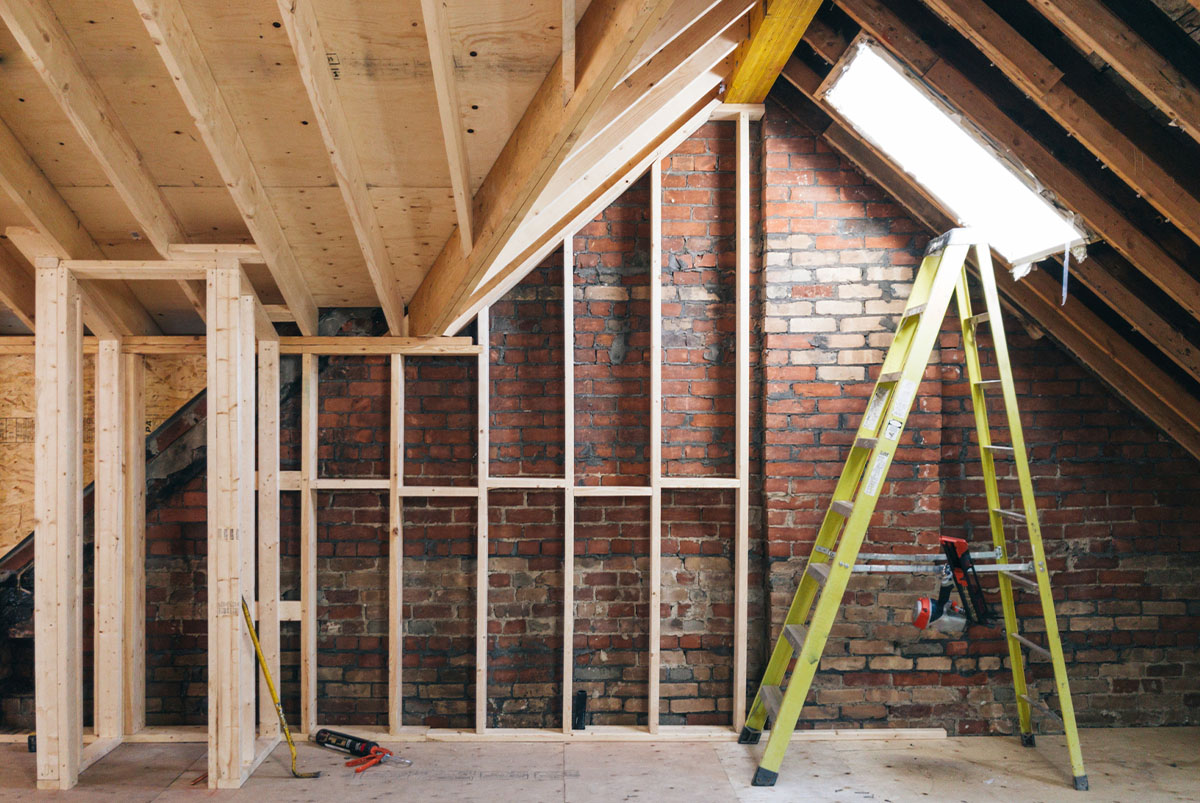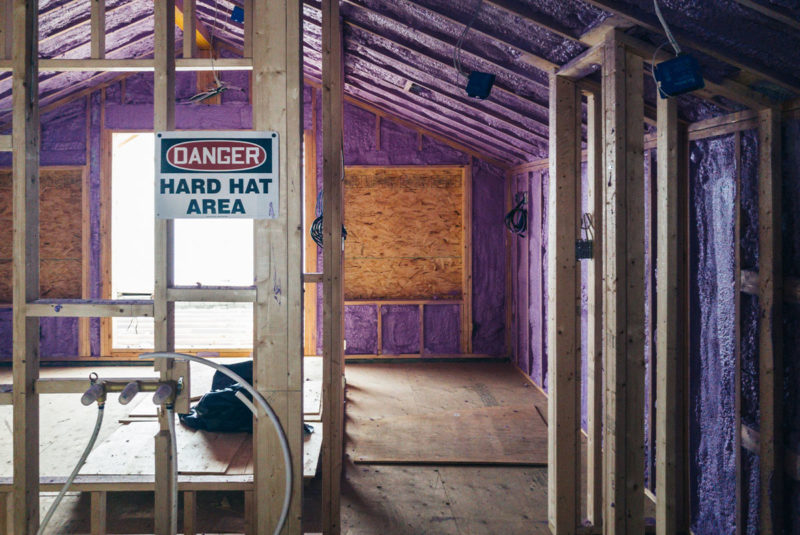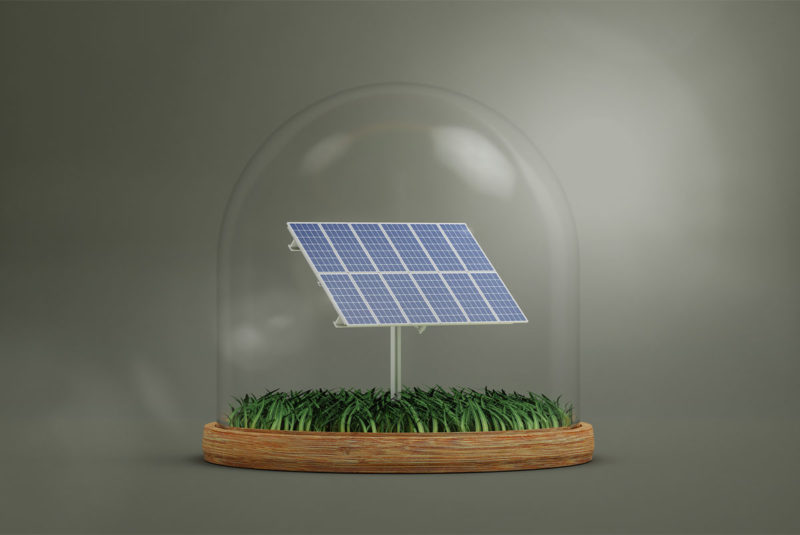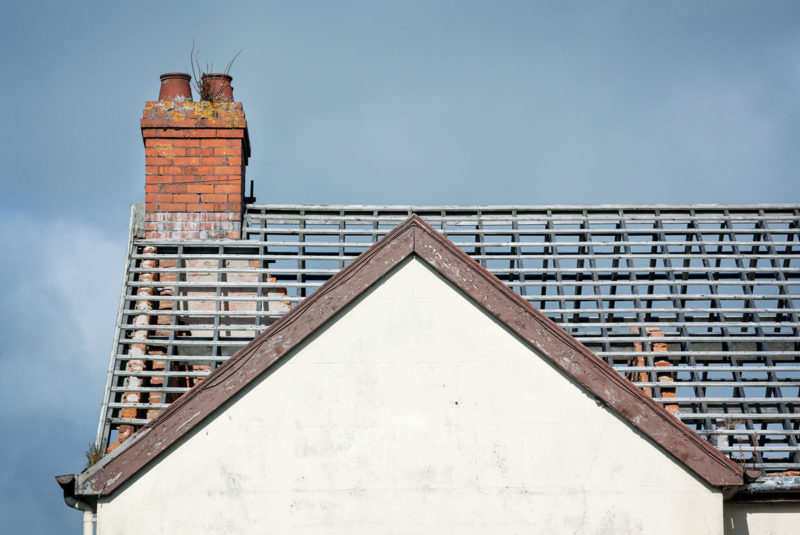Explore your mortgage options
Your home may be your single greatest long-term investment. If your home needs some repairs or improvements or you want to renovate your home to make it more liveable, it can make a lot of sense.
Also, a smart home remodel can improve the value of your home, providing a return on investment of up to 80% when you sell.[1]
The challenge is covering the costs. The average home remodel or renovation can cost around $47,000. A kitchen can cost an average of $25,000, and a bathroom can run you up to $10,000.[1] It may be hard to save up enough money to cover the costs.
The good news is that home renovation loans allow you to borrow against your home equity, borrow extra money when you buy a home or take out unsecured debt, like personal loans.
Which is right for you? Read on to learn more about the best loan options for home improvements.
Need Funds for Home Improvements?
Apply for a home improvement loan from Rocket LoansSM and start planning your next renovation project.
Checking your options won’t affect your credit score.
Cash-Out Refinance
If you have enough home equity, a cash-out refinance can be a great way to get the money you need at a low interest rate. A cash-out refinance works like a standard mortgage refinance. With either option, you take out a new mortgage and use it to pay off your old mortgage.
Hopefully, you can get more favorable terms on your new mortgage, like a lower interest rate or extending your repayment period to lower your monthly payments or shortening it so you can own your home sooner.
With a cash-out refinance, you borrow more money than you need to pay off your old mortgage and then pocket the rest to pay for your home improvements.
For example, let’s say your home’s appraised value is $300,000 and you owe $150,000 on your mortgage. Because your lender will let you borrow up to 80% of your home’s value, you can borrow up to $240,000. With a cash-out refinance, you would pay off the $150,000 balance of your existing mortgage and keep $90,000 for your home renovations.
PROS of a Cash-Out Refinance👍
Your mortgage and home refinancing loan are bundled into one loan and one convenient payment.
If you bought your home when your credit score was lower or interest rates were higher, refinancing can help you get a better interest rate so you can lower your monthly mortgage payment.
With a cash-out refinance, you can spend the extra money however you want. And you have the flexibility to use the money when you need it rather than spending it all at once.
CONS of a Cash-Out Refinance👎
Like any mortgage loan, you’ll need to pay closing costs. Depending on the lender and the value of your home, closing costs typically range from 4% – 6% of the home’s value.
With a cash-out refinance, you’re resetting your mortgage loan. If you take out a new 30-year loan, you’ll start out paying more in interest and less toward your mortgage principal.
Because you’re borrowing money on top of the money required to pay off your existing mortgage, you’ll probably wind up with a larger mortgage payment than you had before.
Home Equity Loan
A home equity loan (sometimes referred to as a second mortgage) is similar to a cash-out refinance because both loans tap into the available equity in your home. But with a home equity loan, you don’t replace your mortgage, you borrow against the available equity in your home.
You receive a lump-sum payment with a home equity loan. And you pay off the loan at a fixed rate for a predetermined period of time, usually between 3 – 10 years. Lenders typically only allow borrowers to borrow 80% – 85% of their home’s appraised value, which may limit the amount you can borrow.
PROS of a Home Equity Loan👍
Mortgage and cash-out refinance interest rates are lower than home equity loan rates, but home equity loans are secured loans, and they have lower interest rates than unsecured loans.
Like a fixed-rate mortgage, a home equity loan has a fixed interest rate and predetermined repayment period. Your monthly payment will be consistent from month to month.
Because you can choose the length of your repayment period, you can control the size of your monthly payment.
CONS of a Home Equity Loan👎
If you take out a home equity loan, you are committing to another monthly payment on top of your mortgage payment. Be sure you have the budget to cover it before you commit.
Like any mortgage loan, home equity lenders may charge an origination fee to process your loan. You may also need to pay for a home appraisal to determine the current value of your home.
Because your home equity loan is secured by your home, if you fail to make your home equity loan payments, you risk losing your home.
If the value of your home drops after you take out the loan, you risk owing more than the value of your home. This is often referred to as being underwater. If you need to sell your home while you’re repaying your loan, you may wind up losing money on the sale.
Home Equity Line of Credit
Think of a home equity line of credit (HELOC) as a cross between a home equity loan and a credit card.
You borrow against your home’s available equity (like you would with a home equity loan), but instead of getting a lump-sum payment, you receive a line of credit equal to the available equity in your home.
Like a credit card, you can draw on the available credit up to your limit. As you make monthly payments, you’ll free up more available credit to use again.
A HELOC is usually divided into two periods that can total 15 – 30 years.
- The draw period: You have 5 – 10 years to draw on your available credit. During the draw period, you only pay interest on the amount you borrow.
- The repayment period: Once the draw period ends, you will no longer access the line of credit, and the balance of the HELOC must be paid back. You typically have 10 – 20 years to make regular monthly payments on your remaining balance plus interest.
Keep in mind, a HELOC is usually an adjustable-rate loan, so the interest you pay on your balance can increase or decrease over the life of the loan.
The key benefit of a HELOC is having the flexibility to choose when you’ll use the available credit. If, for example, your project requires you to pay different contractors at different points during the project, a HELOC lets you pay them as needed.
PROS of a HELOC👍
A HELOC usually doesn’t require closing costs.
Because a HELOC is a secured loan, the interest rate will be lower than the interest rate you’d pay on an unsecured loan, like a personal loan.
Having the flexibility to draw on your line of credit when you need it can be valuable, especially when your project requires working with multiple contractors over an extended period of time.
CONS of a HELOC👎
Because the interest rate on your loan is typically an adjustable rate, your monthly payments can increase or decrease over the life of the HELOC. If you borrow when interest rates are low, you should be prepared to pay more in interest later on.
A HELOC usually has a higher interest rate than a mortgage or home equity loan.
Because your HELOC is secured by your home, if you fail to make your payments, you risk losing your home.
While closing costs for a HELOC are usually lower than they would be for a mortgage or home equity loan, you may still need to pay for an appraisal and other administrative fees. Also, your HELOC may require you to pay a monthly maintenance fee over the life of the loan.
Personal Loan
Of course, not everyone has enough home equity to qualify for a cash-out refinance, home equity loan or HELOC. Also, applying for one of these loans can take anywhere from 2 – 6 weeks.
If you need money quickly, a personal loan might be the best option for you.
With a personal loan, you borrow a lump sum of money that gets paid back with fixed monthly payments, usually over 3 – 7 years.
You can usually get a personal loan through a bank, a credit union or an online lender.
PROS of a Personal Loan👍
Some loan applications can be completed entirely online. Depending on the lender, you could have the money in your hand in 1 business day.
Personal loans are usually unsecured, so you won’t risk losing your home if you can’t make your payments.
Personal loan approval is primarily based on your credit score and income.
CONS of a Personal Loan👎
Personal loans tend to be relatively small. The borrowing limit on most personal loans is usually capped at $20,000. If you meet a lender’s qualifying bar for excellent credit, you may be able to borrow up to $50,000.
To qualify for personal loans, you usually need a credit score in the mid-600s or higher. The better your credit score, the better terms you are likely to get.
Interest rates for unsecured personal loans tend to be higher, with interest rates starting around 8% – 9%.[3]
Home Improvement Is Worth It
Prequalify for a personal loan from $2,000 to $45,000 from Rocket LoansSM and make your dream home a reality.
FHA 203(k) Loan
Of course, not all home renovations happen after you’ve bought a home. If you want to buy a home and need money to make repairs and renovations before you move in, you could take advantage of a Federal Housing Administration (FHA) 203(k) loan.
An FHA 203(k) loan (also known as a federal fixer-upper loan) works like a mortgage. Except, instead of only borrowing what you need to buy a home, you can borrow up to 110% of the home’s future estimated value and use the remaining balance to make renovations.[4]
PROS of an FHA 203(k) Loan👍
While conventional renovation loans usually require a credit score of 620 or higher to qualify, you can qualify for an FHA 203(k) loan with a credit score of 580 or higher. You can even qualify with a credit score of 500 or higher if you can put 10% down.[2]
FHA 203(k) loans only require a down payment of 3.5% with a credit score of 580 or higher.
CONS of an FHA 203(k) Loan👎
With an FHA 203(k) loan, your renovation costs must be at least $5,000.[4] And there are limits on what you can use the loan for. An FHA 203(k) loan covers a lot of things, but luxury improvements, like a pool or hot tub, don’t qualify. You also can’t use your 203(k) money to buy furniture or anything you can take with you if you move.
To qualify for an FHA 203(k), it can’t be a DIY project. You’ll need to submit your renovation plans when you apply for the loan and hire an FHA-approved consultant. The consultant must certify that the work will start within 30 days of closing and take no more than 6 months to complete.
While FHA 203(k) loans are great if you don’t qualify for a conventional mortgage, you will need to pay for mortgage insurance. This includes an upfront mortgage insurance premium that’s 1.75% of the loan value and an annual premium (paid in monthly installments) that’s 0.45% – 1.05% of the loan value.[5]
Conventional fixer-upper loans
If you have a credit score of 620 or higher and want to use your mortgage to renovate a fixer-upper, you might also want to consider a Fannie Mae HomeStyle® Renovation loan[6] or a Freddie Mac CHOICERenovation® loan.[7]
These loans let you borrow enough to cover the cost of renovation and the home’s purchase price or the “as-completed” appraised value of the home (the potential value of your home after renovations). You can even use them to renovate a 1 to 4-unit investment property, as long as you live in one of the units.
Credit Card
If you need money quickly – and it’s a small-scale renovation – you likely have a powerful spending tool sitting between your cash and your change: a credit card. A credit card is a revolving line of credit (like a HELOC) but technically acts as a loan.
Using a credit card to fund a major renovation may not be a financially savvy move. But for small upgrades and improvements, it can be a quick and easy way to pay a contractor or purchase materials for a DIY project. Just be sure to either pay off what you owe in full or stay on top of your monthly minimum payments.
Balance transfer offers
If you have good credit, and minimal credit card debt, you may be able to take advantage of a balance transfer offer. With a balance transfer offer, you can transfer a balance from an existing credit card to a new card or make a purchase using a balance transfer check.
A balance transfer may offer you an introductory interest rate as low as 0%. But it’s important to keep in mind that these offers usually last 6 – 18 months. After that, you’ll pay a higher interest rate on any remaining card balance.
Repayment plans
Some credit cards let you create repayment plans for larger purchases. Instead of adding the purchase to your balance, your credit card company lets you pay it off in monthly installments plus interest.
Repayment plans also range from 6 – 18 months. It can make paying down the balance of a large purchase more manageable, but it also means you’ll have a higher monthly payment on your credit card.
PROS of Using a Credit Card for Home Improvements👍
There are no applications to fill out and no waiting periods.
If you get travel rewards or other credit card rewards based on the amount you spend, your home improvement purchases can help earn lots of miles or points quickly.
CONS of Using a Credit Card for Home Improvements👎
While most of the loan options we’ve discussed have interest rates that start below 10%, most credit cards have an interest rate of 15% or higher. That doesn’t even include additional card fees or balance transfer fees.
Credit cards usually have variable interest rates. That means their rates can soar or dip from month to month.
Your card’s credit limit and existing balance will restrict how much you can spend.
Remodel Now, Pay Later
If you’re looking to improve your home, there are lots of ways to get the money you need. The challenge is to avoid putting yourself in more debt than you can responsibly handle. Before selecting a loan, it’s important to research your options after confirming how big or small your home renovation project needs to be.
Ready for a Personal Loan?
Applying through Rocket LoansSM is fast and easy.
Checking your options won’t affect your credit score.
The Short Version
- The average home remodel or renovation can cost around $47,000[1]
- Home renovation loans allow you to borrow against your home equity, borrow extra money when you buy a home or take out unsecured debt, like personal loans
- While conventional renovation loans usually require a credit score of 620 or higher to qualify, you can qualify for an FHA 203(k) loan with a credit score of 580 or higher[2]
HomeAdvisor.com. “How Much Does It Cost to Remodel or Renovate a House?” Retrieved May 2022 from https://www.homeadvisor.com/cost/additions-and-remodels/remodel-multiple-rooms/
Federal Deposit Insurance Corporation. “203(b) Mortgage Insurance Program.” Retrieved May 2022 from https://www.fdic.gov/consumers/community/mortgagelending/guide/part-1-docs/203b-mortgage-insurance-program.pdf
National Credit Union Administration. “Credit Union and Bank Rates 2022 Q1.” Retrieved May 2022 from https://www.ncua.gov/analysis/cuso-economic-data/credit-union-bank-rates/credit-union-and-bank-rates-2022-q1
U.S. Department of Housing and Urban Development. “203(k) Rehab Mortgage Insurance.” Retrieved May 2022 from https://www.hud.gov/program_offices/housing/sfh/203k/203k–df
U.S. Department of Housing and Urban Development. “APPENDIX 1.0 – MORTGAGE INSURANCE PREMIUMS.” Retrieved May 2022 from https://www.hud.gov/sites/documents/15-01MLATCH.PDF
FannieMae. “HomeStyle® Renovation Mortgage.” Retrieve May 2022 from https://singlefamily.fanniemae.com/media/5041/display
FreddieMac. “CHOICERenovation® Mortgages.” Retrieved May 2022 from https://sf.freddiemac.com/working-with-us/origination-underwriting/mortgage-products/choicerenovation




